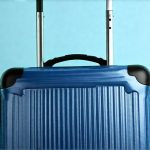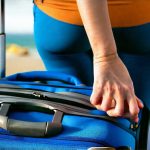Traveling is often envisioned as freedom and adventure – exploring new cultures, relaxing on pristine beaches, or embarking on thrilling expeditions. However, for many individuals, particularly those with pre-existing conditions affecting bladder control or frequency, the prospect can be fraught with anxiety centered around potential “urinary surprises.” The fear of urgency, accidents, or simply the inconvenience of frequent bathroom stops can overshadow the joy of travel. Planning is key to mitigating these concerns and ensuring a comfortable, confident journey. This isn’t about limiting travel; it’s about proactively addressing potential challenges so they don’t dictate your experience.
This article aims to provide practical strategies for planning travel days with minimized urinary disruptions. We’ll cover everything from pre-trip preparation and packing essentials to managing fluid intake during transit and identifying accessible facilities along the way. The goal is to empower you to take control of your travel experience, reducing stress and maximizing enjoyment – regardless of any underlying bladder concerns. It’s about building confidence and feeling prepared for whatever adventures await. Consider how thoughtful breath control methods can help manage anxiety during travel.
Pre-Trip Preparation & Assessment
The foundation of a successful trip starts long before departure day. Proactive planning minimizes unforeseen issues and allows you to approach your journey with peace of mind. This isn’t simply about packing extra changes of clothes (though that’s a good idea!). It’s about honestly assessing your needs and building strategies around them. Consider consulting with a healthcare professional, even if it’s just for reassurance and personalized advice.
A crucial step is understanding your bladder habits. Keep a detailed voiding diary for a few days before you travel. Note the times you urinate, the amount of fluid consumed, and any associated sensations like urgency or leakage. This provides valuable insights into your baseline patterns. Are there specific triggers – caffeine, alcohol, certain foods? Recognizing these can help you adjust your diet and hydration strategies while traveling. Also, identify potential stressors that might exacerbate your condition; travel itself can be a stressor! Understanding how dietary choices impact urinary health is also crucial during planning.
Finally, consider the destination’s accessibility regarding restroom facilities. Research airports, train stations, and planned stops along your route. Websites and apps often provide information about accessible restrooms, though their accuracy isn’t always guaranteed. Knowing what to expect reduces anxiety and allows for more informed decision-making during travel. Don’t hesitate to call ahead to venues or transportation providers to inquire about facilities if you have specific needs.
Managing Fluid Intake & Travel Logistics
Fluid intake is often the biggest source of concern for travelers worried about urinary frequency. The common advice to “stay hydrated” can feel contradictory when you’re trying to minimize bathroom trips! The key isn’t necessarily less fluid, but rather a strategic approach to hydration. Avoid large volumes of liquid at once; instead, sip small amounts consistently throughout the day. This helps maintain adequate hydration without overwhelming your bladder.
Be mindful of diuretics – substances that increase urine production. Caffeine (coffee, tea, soda), alcohol, and even some fruits and vegetables (watermelon, grapes) can have this effect. Reducing or avoiding these before and during travel can significantly lessen urgency. Similarly, be cautious with sugary drinks; they can irritate the bladder in some individuals. Focus on water as your primary source of hydration – it’s always the best choice! Planning around effective hydration strategies can significantly reduce anxiety.
Consider timing your fluid intake around planned stops. For instance, drink a moderate amount of water after you’ve used the restroom at an airport or rest stop. This maximizes the time between bathroom breaks. Also, plan travel routes with frequent opportunities for restroom access, even if it means adding slightly more time to your journey. A little extra planning can save a lot of stress and anxiety on the road.
Navigating Airport & Airplane Travel
Airports and airplanes present unique challenges for bladder management. Security lines, long walks between gates, and limited restroom access on flights can all contribute to heightened anxiety. Arrive at the airport with ample time – this allows you to navigate security checks without rushing and locate restrooms comfortably. Don’t be afraid to ask airport staff for assistance locating accessible facilities or priority boarding if needed.
During the flight, inform a flight attendant about your needs discreetly. They can often provide information about restroom locations and may be able to offer some accommodations. Stay hydrated by sipping water throughout the flight, but avoid excessive amounts before landing. Utilize the restroom before takeoff and again before landing – these are typically the most crowded times, so plan accordingly. Consider wearing absorbent products as a precautionary measure, even if you don’t usually need them.
Remember that airplane bathrooms are often small and cramped. This can make it challenging for some individuals to manage clothing or use assistive devices comfortably. Be prepared for this limitation and consider bringing wet wipes or hand sanitizer for added hygiene. Prioritize comfort and preparedness over speed.
Road Trip Considerations
Road trips offer more control over restroom stops, but also present their own challenges. Plan your route carefully, identifying rest areas, gas stations, and restaurants with accessible restrooms along the way. Apps specifically designed to locate public restrooms can be invaluable resources – though always double-check information before relying on them completely.
Pack a “bathroom kit” containing essentials like absorbent pads or underwear, wet wipes, hand sanitizer, and a change of clothes. This provides peace of mind in case of an accident. Consider investing in a portable urinal if you’re concerned about finding suitable facilities quickly. Be mindful of your driving posture – prolonged sitting can sometimes exacerbate bladder symptoms.
Take frequent breaks during the drive, even if it’s just to stretch your legs and walk around. This helps improve circulation and reduces pressure on the bladder. Communicate openly with your travel companions about your needs; this ensures they understand your situation and can offer support. Don’t hesitate to pull over when you feel urgency – safety is paramount.
Train & Public Transportation Strategies
Train and public transportation systems vary greatly in terms of restroom availability and accessibility. Before traveling, research the specific train line or bus route you plan to use and check for information about facilities on board. Some trains have accessible restrooms; others do not.
When boarding, inquire with a conductor or station attendant about restroom locations and schedules. If accessible facilities are limited, consider requesting assistance finding appropriate accommodations at stations along your route. Be prepared for potential delays – public transportation can be unpredictable – and pack accordingly with absorbent products and wet wipes. A proactive mindset is similar to planning for peace of mind in other areas.
Like with airplanes, sip water consistently rather than drinking large amounts at once. Utilize restroom breaks during scheduled stops and try to position yourself near a restroom on the train or bus if possible. Remember that space may be limited, so be mindful of other passengers when using facilities. Planning is even more critical with public transportation due to its inherent unpredictability.
This article provides a starting point for planning travel days with fewer urinary surprises. Remember, proactive preparation and honest self-assessment are key to a comfortable and confident journey. Don’t let concerns about bladder control limit your adventures – embrace the freedom of travel with confidence!





















